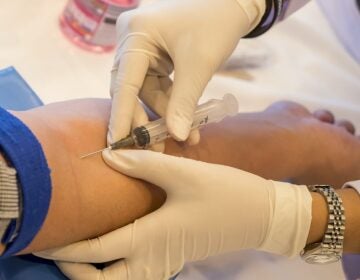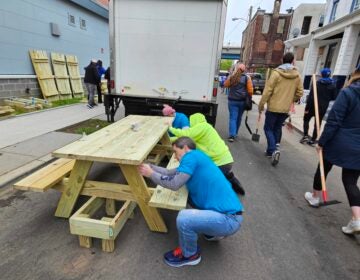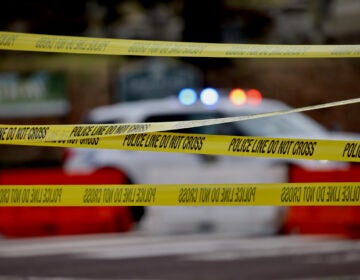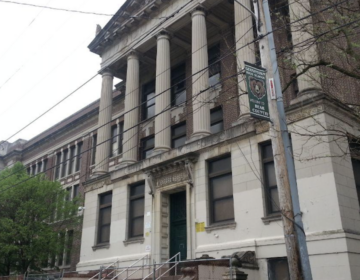‘Gray Area’ discussion series moves on from Germantown
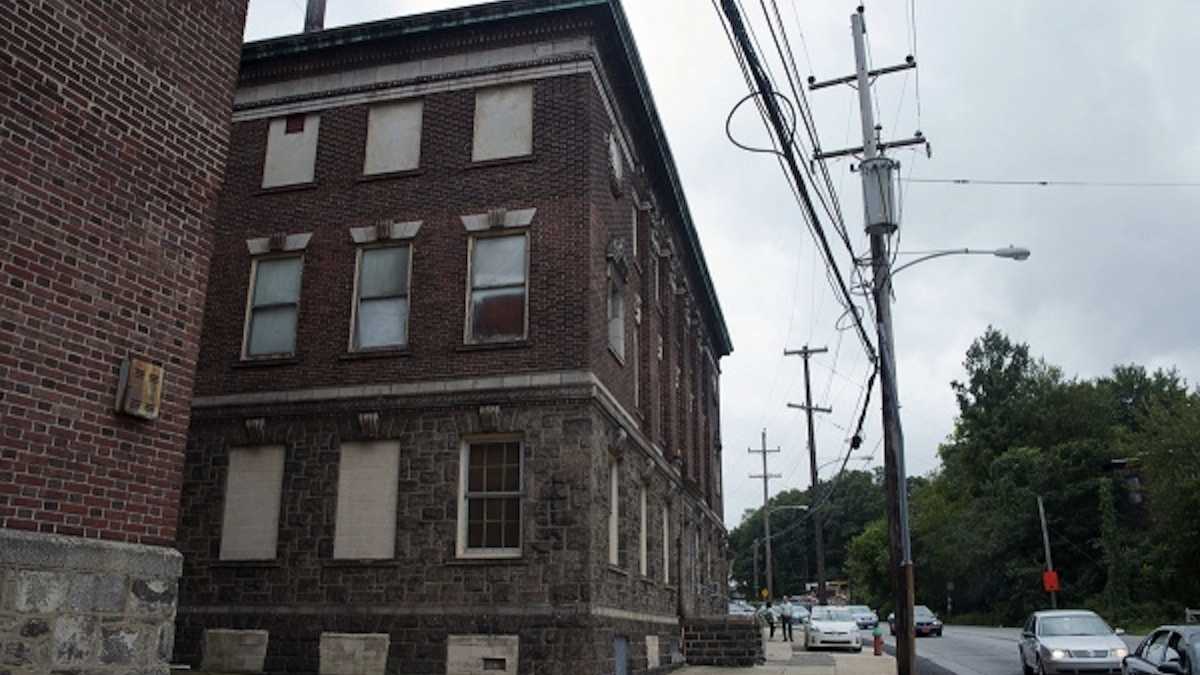
The academic conversation was stimulated by a tour of the Max Levy Autography Company building on Roberts Avenue a few weeks later. (NewsWorks, file art)
Germantown residents completed an academic exercise on Wednesday night that may have some practical and fascinating implementations for the many historic buildings in their community.
Could an old industrial complex be converted into art galleries with a café and a rooftop garden?
Would the adjoining outdoor space be suitable for a community garden?
If wind turbines or a cell tower were added to the building, might it become an economic engine for the neighborhood?
‘Gray Area’ discussions
Possibilities and the realities of life in Germantown were the topics for the third and final part of the Gray Area program in the Northwest Philadelphia.
The academic conversation began last month with a meeting at the Germantown Theatre Center. Sparked by a tour of the Max Levy Autography Company building on Roberts Avenue a few weeks later, it concluded with a presentation back at the Theatre Center by the program’s conveners on Wednesday.
The Gray Area project was launched in 2011 with funding from the Pew Center for Arts & Heritage. It involved panel discussions and other dialogue among preservationists and related professionals.
Gray Area is using three Philadelphia sites — including the Levy building — as laboratories to explore the boundaries of historic preservation and its value to the neighborhoods.
Impacts and design strategies
The Max Levy building at 212-220 Roberts Avenue, near the Wayne Junction station, once employed dozens of Germantown residents, and was used by its original company for graphic printing and photographic processing until 2007, when the firm moved to Northeast Philadelphia.
The group of preservation professionals, historians and architectural and design consultants engaged members of the community to create a matrix that blended “impacts,” or the effects neighbors sought from reuse of the property, with “design strategies,” or visions of what the building could become, explained Alex Gauzza of Interface Studio Architects.
The goal of the exercise was “not just about protecting old buildings, but also finding ways to benefit the surrounding community,” she said.
What residents want from redevelopment of such properties include job opportunities, environmental sustainability, educational facilities and improved security for the community, Gauzza and her colleagues learned.
General strategies to realize those desires, Gauzza said, include:
• greening of properties with vegetable plots, tree plantings, constructed wetlands and roof gardens;
• informational approaches that reveal what the building once was, through signage, public access to the site and improved lighting;
• new uses of the space, such as workshops, galleries and cafes;
• infrastructure additions like bike parking, wind turbines or rooftop cell towers that serve as revenue streams and
• alterations to the building, including façade renovations and new additions.
The overlap of the neighborhood wish-list and professional strategies could result in a “toolkit” that will “allow a design team and a community to set priorities that result in relevant and unexpected design results,” Gauzza said.
The Levy building was purchased by local developer Ken Weinstein’s company, Philly Office Retail, a year ago for $150,000.
Weinstein said last month that he has no specific plan for the future of the building, which is why he volunteered the structure for the Gray Area experiment.
What they said
At Wednesday night’s meeting, Vaughn Taylor, director of marketing and leasing for Philly Office Retail, said that the Levy building has its first tenant, a carpet cleaning business that has moved into a former garage space.
“It’s a small space, but it’s a start,” Taylor said.
Job creation is a primary goal of the company’s investment in the building, he explained, and long-term visions for the property include light industrial use and exhibit space for the arts community.
The Gray Area experiment has revealed and cast more light on the history of the building, Taylor said, and has heightened community interest in the site.
Tom Sharpless, a resident of Germantown for 23 years, said he has mixed emotions about historic-preservation projects. He said Philadelphia is sometimes “crushed” under historic-preservation guidelines and “the cost of keeping old houses empty.”
However, Sharpless said he was encouraged by the concepts coming out of the Gray Area conversations, which have shown him that “historic preservation doesn’t have to cost money — it could make money.”
“I’m a fan of recycling historic buildings creatively,” he said.
The next phase of Gray Area, a project of the University of the Arts and DesignPhiladelphia, will look next at Hawthorne Hall, a commercial building at 3848 Lancaster Ave., and the Bromley-Garsed Mansion, the former YMCA in Frankford, as the program continues through July 2014.
NewsWorks has partnered with independent news gatherer PlanPhilly to provide regular, in-depth, timely coverage of planning, zoning and development news. Contact Alan Jaffe at ajaffe@planphilly.com.
WHYY is your source for fact-based, in-depth journalism and information. As a nonprofit organization, we rely on financial support from readers like you. Please give today.
‘Gray Area’ discussion series moves on from Germantown
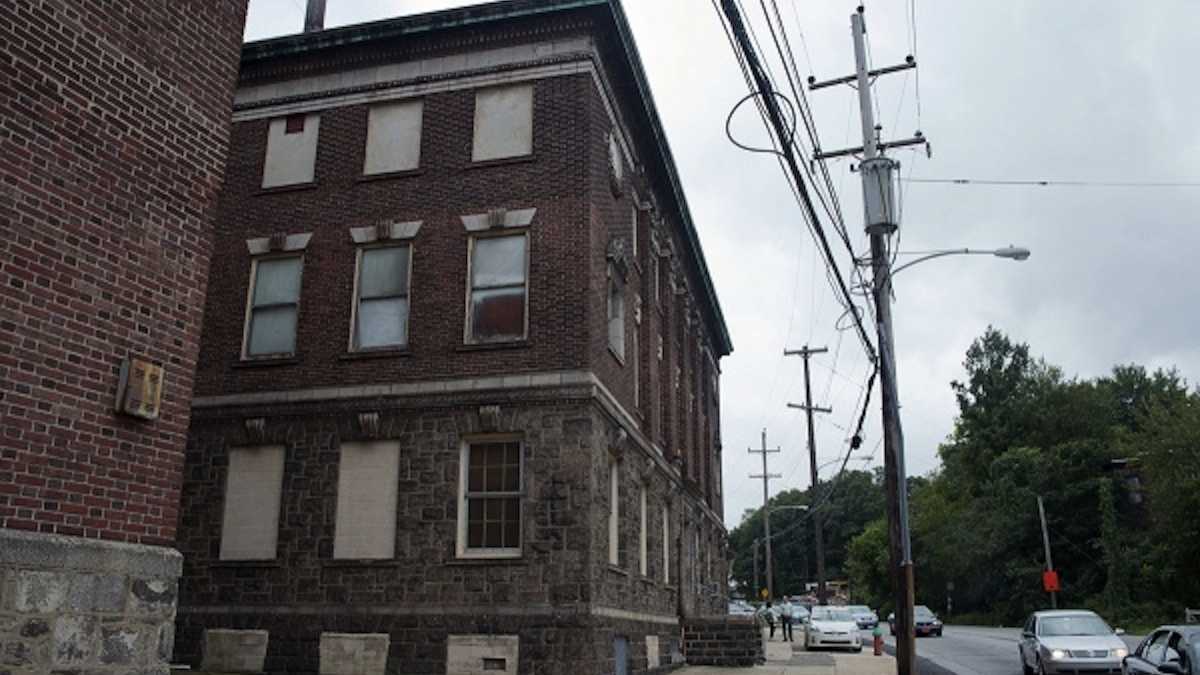
Germantown residents completed an academic exercise on Wednesday night that may have some practical and fascinating implementations for the many historic buildings in their community.
Could an old industrial complex be converted into art galleries with a café and a rooftop garden?
Would the adjoining outdoor space be suitable for a community garden?
If wind turbines or a cell tower were added to the building, might it become an economic engine for the neighborhood?
‘Gray Area’ discussions
Possibilities and the realities of life in Germantown were the topics for the third and final part of the Gray Area program in the Northwest Philadelphia.
The academic conversation began last month with a meeting at the Germantown Theatre Center. Sparked by a tour of the Max Levy Autography Company building on Roberts Avenue a few weeks later, it concluded with a presentation back at the Theatre Center by the program’s conveners on Wednesday.
The Gray Area project was launched in 2011 with funding from the Pew Center for Arts & Heritage. It involved panel discussions and other dialogue among preservationists and related professionals.
Gray Area is using three Philadelphia sites — including the Levy building — as laboratories to explore the boundaries of historic preservation and its value to the neighborhoods.
WHYY is your source for fact-based, in-depth journalism and information. As a nonprofit organization, we rely on financial support from readers like you. Please give today.


